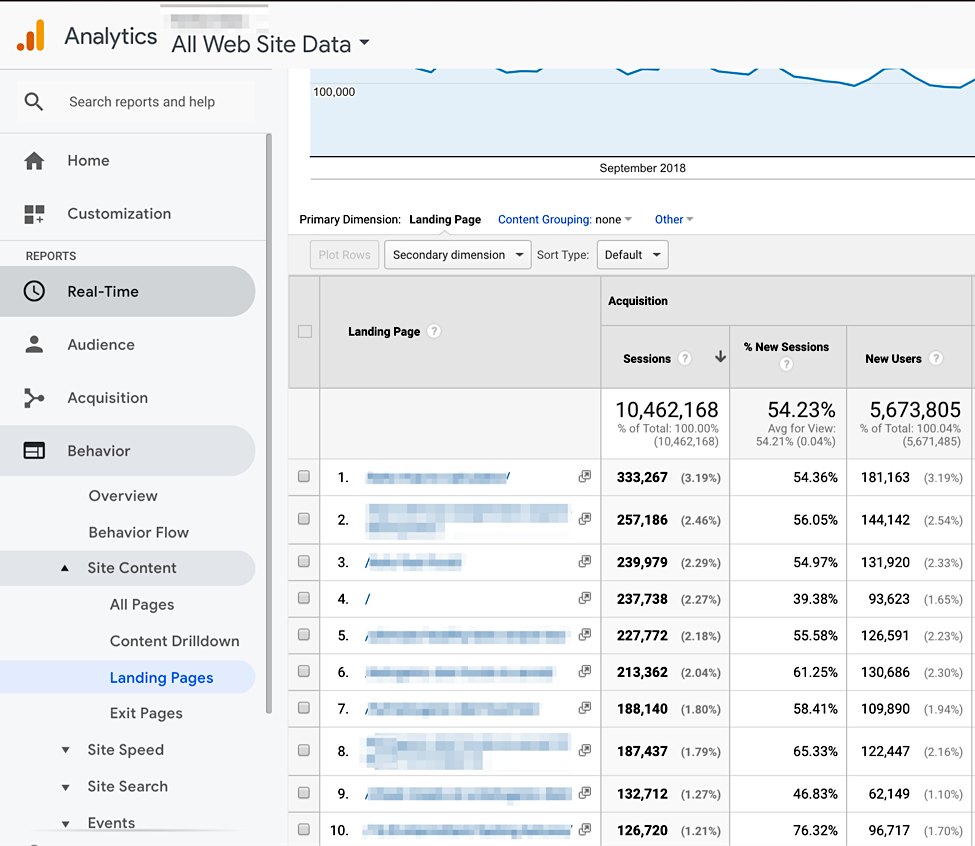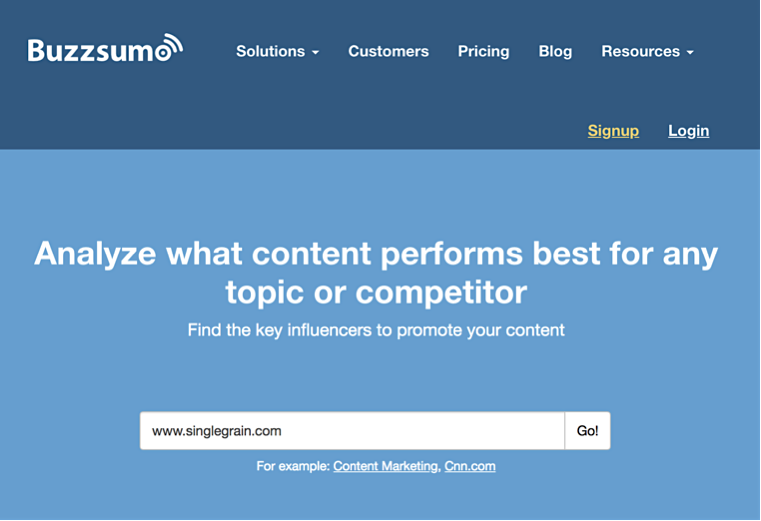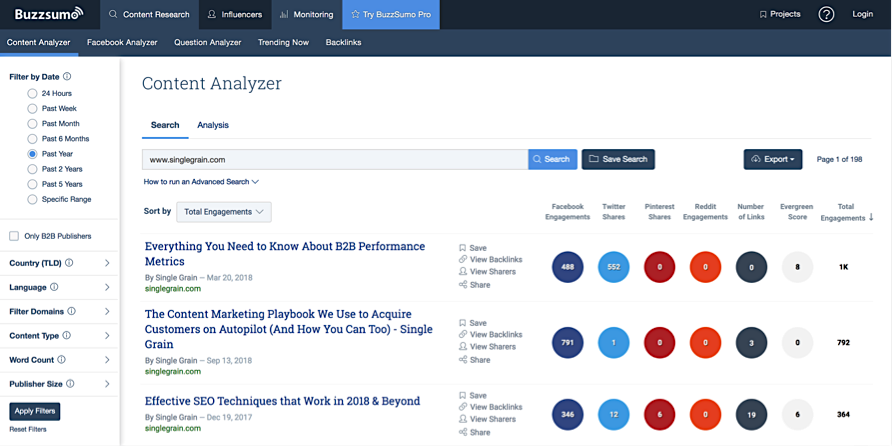How To Repurpose Content for Legendary ROI

One goal that all marketers should aspire to is improving return on investment.
Strong writing, creative presentations, and beautiful videos are all great, but at the end of the day, it’s still a business. And your business needs results if you want it to grow and stay relevant.
The ROI calculation is pretty simple: you divide your “profit” by your “cost”. These don’t necessarily have to be dollar values – your time is a huge part of your investment cost – but regardless of your variables, the fastest way to boost ROI is by increasing your return without increasing your investment proportionally.
Creating great content is an expensive and time-consuming investment for you and your business. So in the spirit of ROI, you should strive to squeeze all the value out of that upfront investment. By repurposing your best content, you can extend its life and reach without having to go through the full editorial process again.
In addition to improving your ROI, repurposing can help you reach a new, wider audience; different people prefer different types of content and hang out in different places online. The same type of information is probably useful to people who read a lot of articles on Medium and people who watch a lot of videos on YouTube.
But the benefits of repurposing don’t end there. Repurposing your content will help you increase your marketing ROI across the board. Additionally, the process of identifying your best content and exploring new channels to reach your target customers will teach you a ton.
You can use this new experience when planning your next editorial calendar or even non-content marketing. Discover that your audience loves podcasts? Consider sponsoring one in your industry. Find a whole segment that engages really well with video? Start using video ads on Facebook instead of just text.
But it all starts with the content that your brand is already producing. So here’s how to repurpose your content for legendary ROI.
Step 1: Identify Your Best Content
The first step in a good content repurposing strategy is to find the pieces that are worth your time and energy to redistribute.
It’s usually a good idea to start with the content that is already driving you a lot of traffic or conversions. That content already has proven value. People find it useful or interesting. The trick now is just to get it in the hands of more people.
First Stop: Google Analytics
The first place I always look for content like this is Google Analytics. I go under Behavior > Site Content > Landing Pages and look for the most popular pages of the site.

I also usually set the calendar for the past 90 days:

But you can also try checking a longer-term view or specific months like last December to see what content was popular last Christmas for ideas on repurposing this holiday season.
Of course, you’ll see pages like your homepage on here, but a large chunk of them will be the different content across your site. And the drop off is likely to be dramatic. You’ll have a handful of pages that bring in 60-90% of your traffic.
You shouldn’t stop at landing pages either. Looking at All Pages can help you find content that visitors are reading or watching on your site, but aren’t managing to find online organically.
Next Stop: BuzzSumo
Once you have your top pieces from Google Analytics, use a tool like BuzzSumo to find your most shared content. Just type in your domain name:

And you’ll get a list of your top articles on social media:

This will not only tell you what topics and formats are most popular on sites like Twitter, Facebook and LinkedIn, but also which articles make excellent candidates for repurposing.
And even though both of these tools are fantastic, sometimes there’s content that you just know will be a hit based on either successful competitor content or your own intuition about your customer base. Data-driven decisions are always best, but there is nothing wrong with including a few hunches into your repurposing plan. Take a moment to think of a few. Don’t force it, but if something pops in your head pretty quickly, toss it on the list.
Step 2: Ways to Repurpose Content
There are literally hundreds of ways you can repurpose content. Here are some of my favorites.
Infographics
Infographics are a classic way to repurpose content because the visual and easily-digestible format makes them extremely shareable. These are especially great if your content has a lot of statistics or steps involved in it.
If you don’t have someone in-house, you can usually hire a professional freelancer to turn an article or video into an infographic for a reasonable price and a quick turnaround. If you’re not a designer, I don’t suggest trying to make an infographic yourself. It’ll come across as amateur.
Video
Creating a video is a slightly more involved process, but can be really effective these days. Video – both long-form (think YouTube) and bite-sized (think Facebook) – is definitely becoming more popular in content marketing and helps to build customer trust.
Most lists and how-to’s can be turned into videos pretty easily, and they can be especially compelling and shareable if the original content has a narrative or emotional angle. Remember to keep your video short and to the point, professionally filmed, and include closed captions or text overlay, since many people view videos with the sound turned off.
This product demo video from BUFF Headwear is a great example of a simple, captivating, and helpful video:
Slideshare
Sharing slide presentations on Slideshare is another great way to repurpose content inexpensively. You can often grab most of the text from the original content. Just make sure you cut it down and focus on the key parts.
If you want to link to the more in-depth original article within the slide deck, that’s a good way to bring interested customers back to your site. This is especially popular in B2B markets, where your target audience is more likely to be interested in educational presentations and hang out on LinkedIn.
Blog Posts
Most people who talk about repurposing content assume that blog posts are the starting point. But any content you have is eligible for republishing.
If you have a strong Twitter account, extract your highlights and compile an article from it. If you’ve made a popular video or run a webinar, have someone turn it into a written format where it can index for organic search.
Medium
Medium is a popular blogging platform, but many people don’t realize how easy it can be to drive traffic back to your own site from it.
They have a simple import tool to pull an article straight from your existing blog. They even include the important “rel=canonical” tag to avoid any duplicate content penalty. This can get your content in front of a new audience. However, to be truly successful on Medium, you should identify large publications in your industry to syndicate on.
E-book
One of the easiest ways you can re-use content is to take your most popular posts of a certain theme – say all your pillar posts on marketing funnels – and put them together as an e-book. You can then give that e-book away as a free download (lead magnet) as a way to capture leads.
Social Posts
You can extract snippets or quotes from your most successful articles and use them as social posts to garner more engagement. WordPress has a “Click to Tweet” plugin that makes this super easy, as evidenced in this article “Hey Siri: How Do I Optimize for Voice Search?”:

If you load those snippets into a tool like Buffer or Edgar, you can include a link to the original content, and thus breathe fresh life into evergreen content.
Webinar
Webinars can bring a live element to your content by letting you communicate directly with customers and more effectively craft a tailored pitch.
You don’t need to start from scratch either. Take an existing piece of content like a how-to or slide presentation and turn it into a live tutorial. As a bonus, you can record your webinar and use it as an evergreen video.
Paid Ads
Remember when I said that repurposing will teach you about your customer base? Well, this is a perfect way to apply that. Once you see which content is resonating organically with your target audience, you can use that to shape your paid strategy, too.
Refurbish + Republish
Sometimes you have content that used to be really popular but is now out of date. Instead of writing an entirely new piece, you can refresh the original piece with more up-to-date information and then re-promote it like a new article. Not only will that save you a lot of time, but it will preserve any existing traffic and backlinks you already earned!
When you update it, update the publish date but do not change the URL or you’ll mess with your ranking. Also, it’s a good idea to include a note at the top of the post noting that this has been updated as of the current date to reflect new or expanded info.
Conclusion
Repurposing content is a great way to maximize your marketing ROI and it’s fairly easy. The trickiest part is learning how to get good at producing and promoting different content formats, which is one reason that people may choose to hire a digital marketing agency.
You can also hire freelance writers and designers on sites like Upwork if you have a strong grip on the high-level strategy and just need help to execute the actual content. All you need to do is identify your strongest content and pick a few new formats to experiment with.
You might be surprised at how many potential customers are out there who just haven’t found you yet because you weren’t publishing your content in the place or form that they consume.
